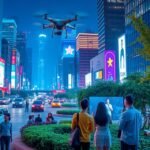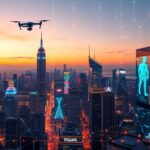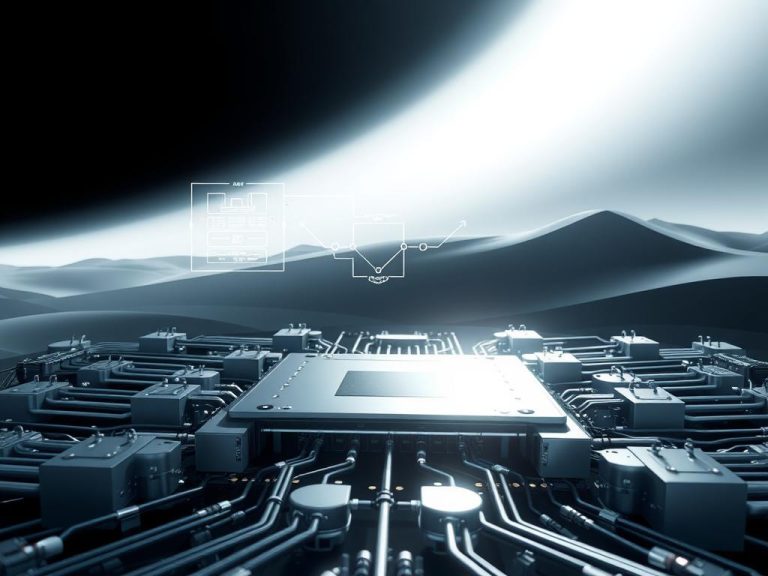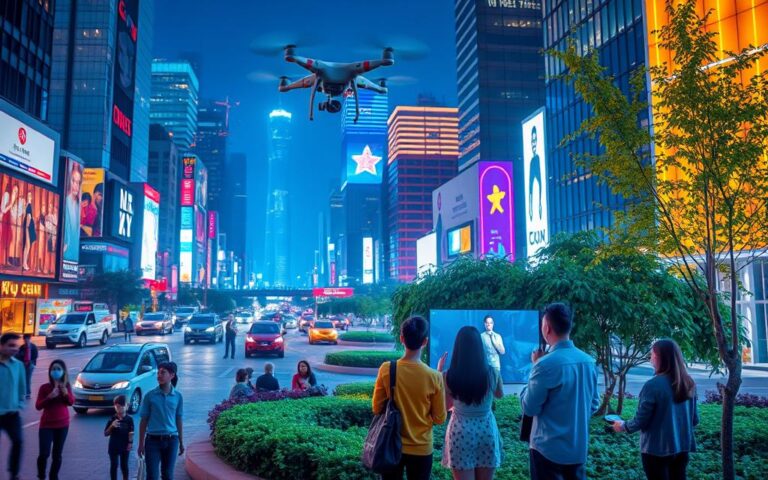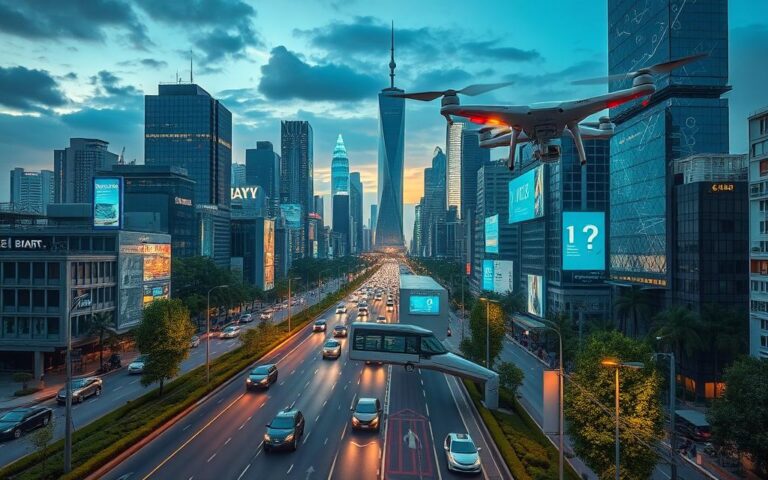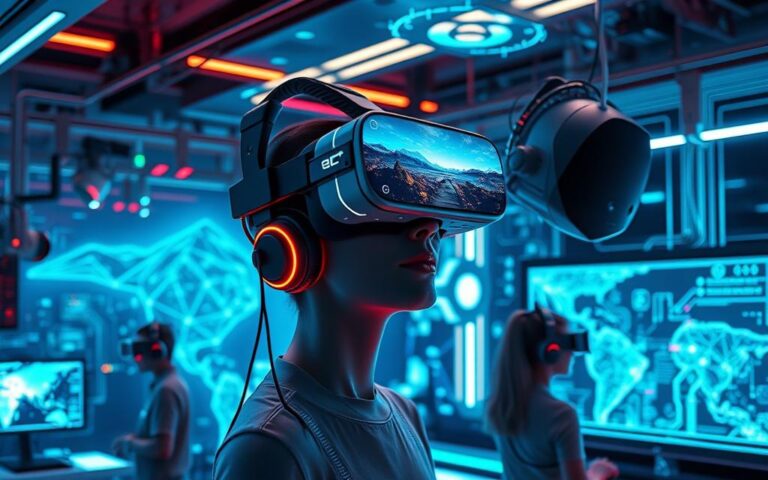What Is Personal Technology? How It Shapes Daily Life
Personal technology has transformed our lives, work, and connections. Digital devices are now deeply woven into our daily routines. By 2022, 94% of homes had personal computers, showing the swift adoption of smart devices and digital technologies.
The pandemic boosted our reliance on technology. By April 2021, 58% of U.S. adults called the internet essential. Personal tech now includes smartphones, tablets, wearables, and smart home devices.
Young adults aged 18-49 are particularly tech-savvy. 69% of them see digital devices as crucial to their daily lives. From chatting to being productive, personal tech has become vital.
About 66% of people worldwide now have internet access. This allows for unmatched connectivity and teamwork. Smart devices are more than just handy gadgets.
They’re essential platforms that change how we interact and learn. These tools help us navigate our increasingly digital world with ease.
What Is Personal Technology
Personal technology has changed a lot since the early days of computing. We’ve moved from big desktop machines to slim, powerful smart devices that fit in our pockets. This shift in personal computing is truly amazing.
The journey of personal computing is quite remarkable. In 1989, only 15% of homes had a personal computer. By 2011, this grew to 75%.
In 2022, a whopping 94% of households used digital technology. This shows how quickly we’ve embraced these tools.
Evolution of Personal Computing Devices
Personal computing devices have changed a lot over time:
- Early desktop computers with limited capabilities
- Portable laptops revolutionising mobility
- Smartphones becoming primary computing platforms
- Wearable technology expanding digital interactions
Key Components of Modern Personal Technology
Modern personal technology has three main parts:
- Portability: Devices that move with users
- Connectivity: Seamless internet and network integration
- User-centric design: Intuitive interfaces and personalisation
The Rise of Smart Devices
Smart devices have changed personal computing. New hardware parts now allow for fancy wearable tech like smartwatches. These can track health and offer advanced security features.
Technology is best when it empowers human potential.
Personal technology keeps changing our daily lives. It makes complex tasks simpler and more accessible. From health tracking to digital chats, it’s reshaping how we live.
The Digital Revolution in Daily Communication
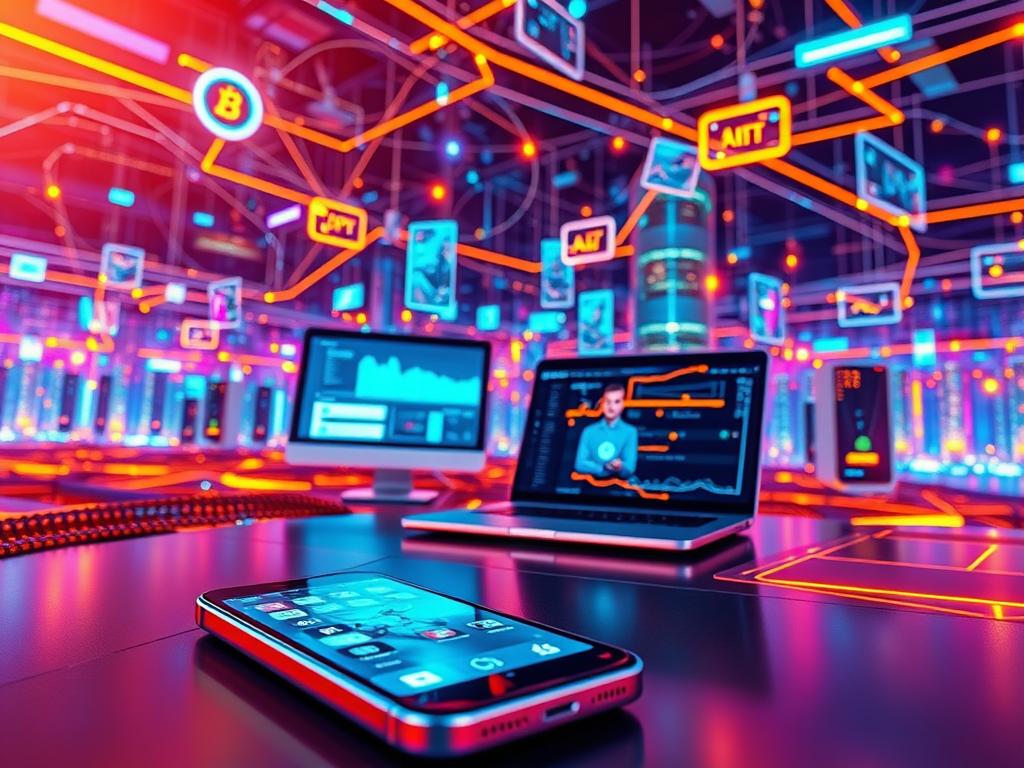
Digital communication has changed drastically in recent years. New tech connects people worldwide instantly. Social media and video calls now shape our daily interactions.
The COVID-19 pandemic sped up digital communication use. About 81% of Americans started using video calls more often. This change showed how vital digital tech is for staying connected.
- Social media platforms enable global connectivity
- Video calls bridge geographical distances
- Instant messaging provides real-time communication
Digital platforms have made communication more open. They let people connect with loved ones worldwide. Users can join virtual groups and share experiences instantly.
- Connect with friends and family worldwide
- Participate in virtual communities
- Share experiences in real-time
Social media has changed how we talk to each other. Facebook, Twitter, and Instagram offer new ways to network. Digital communication now transcends traditional boundaries, creating interconnected global communities.
These platforms have built worldwide communities. They’ve reshaped personal and work connections. Digital tech has truly changed how we interact in the 21st century.
Technology has fundamentally reimagined human connection in the 21st century.
Personal Technology in the Workplace
Digital productivity and workplace technology have revolutionised professional collaboration. The COVID-19 pandemic sped up this shift in corporate landscapes. These changes have dramatically transformed the modern workplace.
Recent research highlights technology’s impact in professional settings:
- 93% of companies have embraced remote work strategies
- 34% of organisations migrated assets to cloud platforms
- Technology has become central to workplace operations
Remote Work Technologies
Remote work tech allows professionals to work smoothly from various locations. Virtual private networks and cloud-based tools have become crucial for distributed teams. Secure communication platforms also play a vital role.
Digital Productivity Tools
Digital productivity tools have changed how we manage workflows. Organisations now use advanced software for various tasks.
- Real-time project tracking
- Automated task management
- Performance analytics
Professional Communication Platforms
Platforms like Microsoft Teams are now essential workplace technologies. Video meetings and instant messaging have replaced traditional office interactions. These changes have created new dynamics in professional communication.
| Technology Type | Primary Function | Productivity Impact |
|---|---|---|
| Cloud Collaboration Tools | Document Sharing | Increased Efficiency |
| Video Conferencing | Remote Meetings | Enhanced Communication |
| Project Management Software | Task Tracking | Improved Coordination |
These tech advancements offer great benefits. However, organisations must balance digital productivity with human connection. This balance helps maintain workplace culture and keep employees engaged.
Impact on Privacy and Security
Personal technology has revolutionised our approach to digital privacy. Every online interaction creates a digital footprint. This poses new challenges for cybersecurity and data protection.
The personal data landscape is increasingly complex. Cyber threats are rising at an alarming rate. A new attack begins every 40 seconds.
Individuals face significant risks. These include identity theft, financial fraud, and unauthorised data collection by corporations.
- Identity theft affecting nearly half of American adults
- Potential financial fraud
- Unauthorized data collection by corporations
Regulatory frameworks like GDPR address these challenges. Privacy by design has become crucial. It requires technology to integrate privacy considerations from the start.
The increasing power of technology creates significant ethical and legal challenges in data protection.
Individuals can protect themselves through various strategies. These include using password managers, VPNs, and antivirus software.
- Using robust password managers
- Implementing virtual private networks (VPNs)
- Installing comprehensive antivirus software
Multiple laws protect resident data at federal and state levels. Understanding digital privacy is now crucial. The debate continues: how can we balance convenience with privacy rights?
Technology’s Influence on Shopping and Entertainment
Digital advancements have transformed our shopping and entertainment habits. Personal tech now offers smooth interactions across various platforms. This shift has redefined how we manage financial transactions.

Today’s consumers use tech to make purchasing decisions effortlessly. E-commerce, digital entertainment, and mobile payments have merged. This fusion has changed how we engage with brands and enjoy content.
E-commerce Revolution
Online shopping has shaken up retail. Here are some eye-opening facts:
- UK consumers spend over £22.8 billion annually shopping online while using public transport
- 54% of social media users research products through digital platforms
- Mobile devices now account for 50.44% of global internet traffic
Digital Entertainment Platforms
Digital entertainment now caters to individual tastes. Streaming services, mobile gaming, and interactive content have changed media consumption. These platforms offer easy access to a wide range of options.
| Entertainment Platform | User Engagement |
|---|---|
| Streaming Services | 77% of digital minutes in the US |
| Mobile Gaming | 40% of millennials interact daily |
Mobile Payment Solutions
Mobile payments have made financial transactions incredibly easy. Solutions like Apple Pay and Google Wallet are becoming common. About 47% of consumers are open to buying through digital platforms.
Tech keeps evolving, offering more tailored experiences. These changes affect shopping, entertainment, and money matters. The future promises even more seamless interactions in these areas.
The Social Impact of Personal Technology
Personal technology has revolutionised social interactions. It’s created complex digital relationships that reshape our connections. Online communities now serve as powerful platforms for global connection.
Social media influence dominates modern communication, especially among the youth. The digital landscape reveals fascinating insights about our online behaviour.
- By 2020, approximately 2.9 billion people were active on social media platforms
- Nearly 70% of Americans believe the internet benefits relationships
- Children’s social interactions increasingly occur through digital channels
The digital revolution offers both opportunities and challenges. Online communities provide unparalleled connectivity. However, they also raise concerns about social isolation and mental health.
Studies link increased screen time with feelings of loneliness. This is particularly true for children and teenagers.
Cyberbullying is a significant issue in digital social environments. Online anonymity can amplify negative interactions. This creates potential psychological risks for vulnerable individuals.
Children used to virtual communication may struggle with non-verbal social cues. This could hinder their interpersonal skill development.
Technology connects us globally but can disconnect us personally.
Understanding these dynamics is crucial as digital relationships evolve. We must thoughtfully engage with the social implications of personal technology.
Conclusion
Personal technology is evolving rapidly, transforming our daily lives. It’s changing how we communicate, work, and interact with the world. Digital literacy has become crucial for navigating our complex digital ecosystem.
Many families have embraced digital connectivity. Research shows 25% of Americans feel technology has brought them closer together. The future promises even more profound changes, pushing us to adapt continuously.
Smart devices and communication platforms are now integral to our networks. The challenge lies in balancing innovation with human needs. Digital literacy will help us engage critically with emerging technologies.
We must develop skills to navigate the complex digital landscape. This applies to both students and professionals. It’s about leveraging technology while maintaining a thoughtful approach.
Personal technology is a powerful tool for connection and growth. By using it wisely, we can enhance our lives and communities. Let’s harness its potential to create positive change.
FAQ
What exactly constitutes personal technology?
Personal technology includes portable digital devices like smartphones and tablets. It also covers wearable tech and smart home gadgets. These devices enable individual connectivity and digital interaction in daily life.
How has personal technology transformed communication?
Personal tech has revolutionised how we connect with others. It’s replaced traditional calls with digital platforms like instant messaging and video calls. This allows for global connectivity and instant interaction across different locations.
What are the primary privacy concerns associated with personal technology?
Key privacy concerns include digital footprints and potential data exploitation. Cybersecurity threats and increased collection of personal information are also worrying. These issues raise significant questions about individual privacy rights.
How has personal technology impacted workplace dynamics?
Personal tech has dramatically changed how we work. It’s enabled remote work and introduced digital productivity tools. It’s also created more flexible work arrangements beyond traditional office environments.
What cybersecurity measures can individuals implement?
Recommended measures include using password managers and virtual private networks (VPNs). Robust antivirus software and two-factor authentication are also crucial. Maintaining vigilant online behaviour helps protect personal digital information.
How has e-commerce been influenced by personal technology?
Personal tech has turned every digital device into a potential sales platform. It’s introduced mobile payment solutions and digital wallets. This enables seamless, contactless transactions across multiple online and offline channels.
What potential negative social impacts does personal technology present?
Potential negative impacts include risks of social isolation and decreased face-to-face interactions. Technology addiction and negative effects on mental health are concerns. Digital platforms may also exacerbate social divisions, particularly among younger users.
What future developments are anticipated in personal technology?
Anticipated developments include advancements in artificial intelligence and augmented reality. Internet of Things (IoT) technologies and more sophisticated wearable devices are expected. Increasingly integrated smart ecosystems will provide more personalised digital experiences.
How quickly has personal technology been adopted globally?
Personal tech has seen rapid adoption worldwide. Smartphone use exceeds 80% in many developed countries. There’s also quick growth in emerging markets. This shows its transformative role in modern society.
What skills are crucial for navigating the personal technology landscape?
Critical skills include digital literacy and understanding cybersecurity principles. The ability to evaluate online information is vital. Adaptability to new technologies is important. Maintaining a balanced approach to digital use and personal well-being is crucial.



